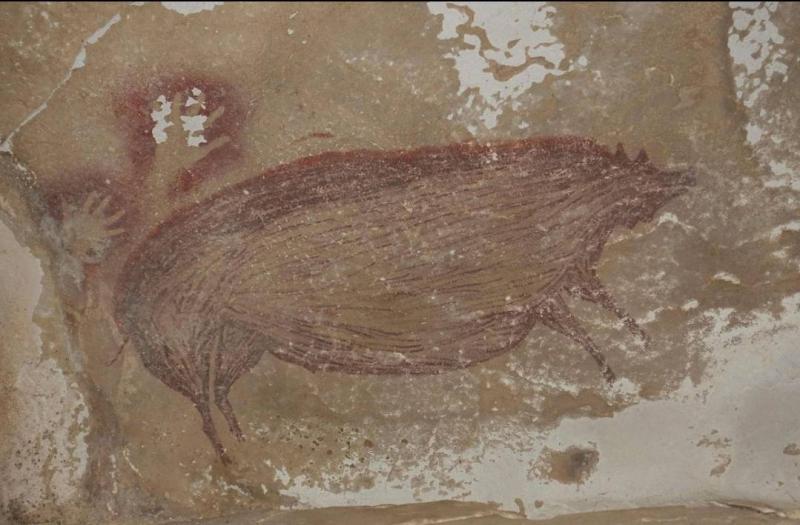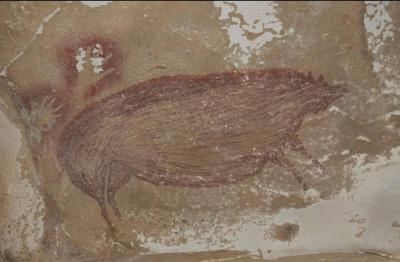A group of archaeologists from Griffith University has discovered what is believed to be the oldest known cave mural in the world, dating back up to 45,500 years.
The mural was found in a cave located south of the city of Sulawesi during field research conducted with a leading Indonesian archaeological center known as the National Archaeological Center, which featured an image of a Sulawesi warty pig, a common animal on the Indonesian island. Notably, this pig painting was discovered in a limestone cave in the Liang Tjideng archaeological area and is considered the oldest known representational artwork in the world. The cave is situated in a valley surrounded by steep limestone cliffs and can only be accessed through a narrow passage during the dry season, as the valley floor becomes entirely submerged during the rainy season. Additionally, it is important to mention that the isolated "Bugi" tribe lives in this remote valley, and they have confirmed that no outsiders or Western inhabitants have ever visited the valley.
Researchers have indicated that the date of this discovered mural goes back at least 45,500 years, and it is part of a rock painting situated high along the back wall of the cave. The researchers described the mural as depicting a short-haired pig with a pair of facial warts resembling horns in front of its eyes, all characteristic features of adult male Sulawesi warty pigs. Reportedly, the mural was painted using red ochre pigment, and it shows the pig observing a fight or a social interaction among other warty pigs. The researchers stated that humans have hunted warty pigs for tens of thousands of years, making them the most commonly depicted animals in the island's Ice Age rock art.
Moreover, the researchers point out that accurately dating the rock mural presents a significant challenge; however, the discovered rock art in limestone caves can be dated using uranium series analysis of naturally occurring calcium carbonate deposits that form on the cave wall surface where the mural was found. Notably, these mineral deposits allowed the team to determine the age of this 45,500-year-old mural, which had naturally formed on the mural's surface, indicating that the mural was painted before the deposits formed.




